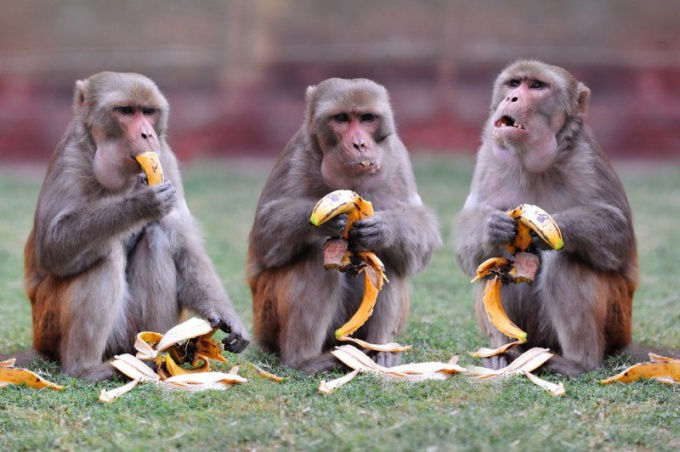Instruction
1
The largest apes are the gorillas. But despite its huge size, the gorilla is a peace-loving creatures, eating only plant food. The feeding of the gorillas takes place mostly on earth, because their dimensions do not allow these apes to wander in a fragile tree branches in search of food. Eat these apes very much, and their massive jaws can grind even the most solids – wood, bark, roots and stems of plants. The lion's share of time these monkeys trying to pass for a meal, eating the tree ferns and lianas. Gorillas that live in mountainous areas, eating bamboo shoots and wild celery.
2
Other apes are orangutans. This is one of two Asian genera of great apes (the second rod – Gibbons). If you compare the orangutan with its African counterpart, the gorilla, the first external simian traits is much more pronounced. Orangutans with great pleasure eat bananas, mango, plums, figs and other tropical fruits. The incredible strength and amazing agility allows these monkeys in search of food to conquer even the tallest trees because the fruit is much tastier.
3
Monkeys are omnivorous creatures, but their give preference to fruit. They eat all that they can find in the rainforest. Their diet includes seeds, roots, resin, insects, molluscs, fish, crustaceans, small reptiles (lizards), birds, small mammals (rodents). In other words, the food monkeys eat anything that isn't poisonous or all that they can gather or catch.
4
Japanese short-tailed macaques feed exclusively on the bark of trees, and Javanese long-tailed macaques happy she's eating sea food, especially succulent crab meat. By the way, this monkey is sometimes called – monkeys-crab. The closest relative of the human, chimpanzee, feeds on fruits, nuts, young and succulent leaves, and sometimes fresh meat.
5
In General, the diet of the monkeys is based, for the most part, ripe and sugary fruits, easily digestible parts of plants, succulent shoots, the cores of palm trees, flower buds, insects, nuts and sometimes meat. The fact that the stomach some primates are not adapted to enzymatic digestion. That is why regular consumption of foods rich in fiber (leaves, grass) can cause some monkeys poisoning. But there are those primates that have this order, for example, the colobus monkeys have in their stomach pockets with bacteria that secrete the appropriate enzymes.
